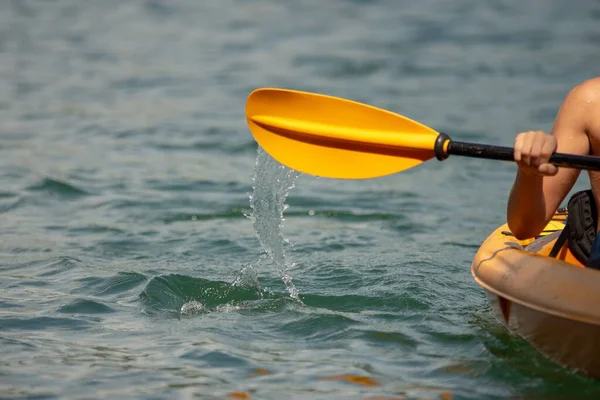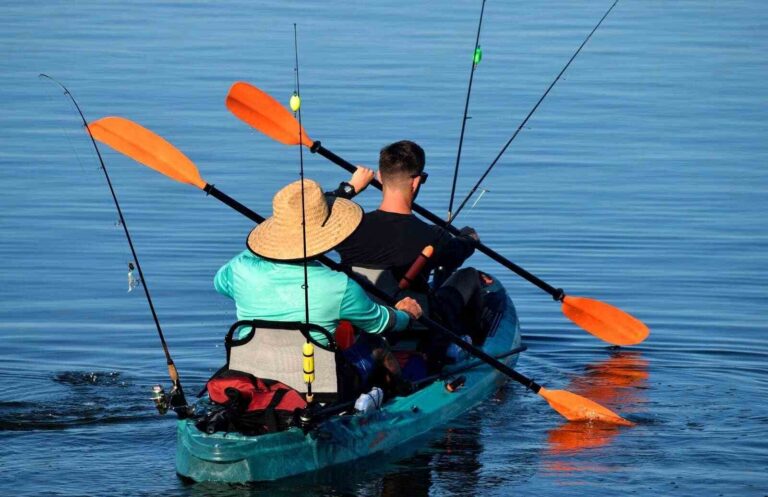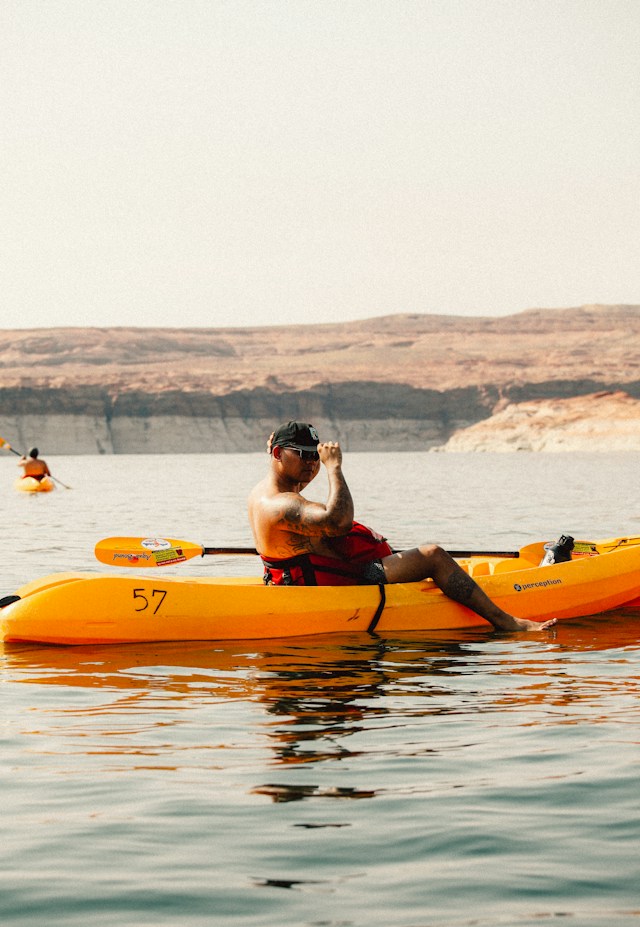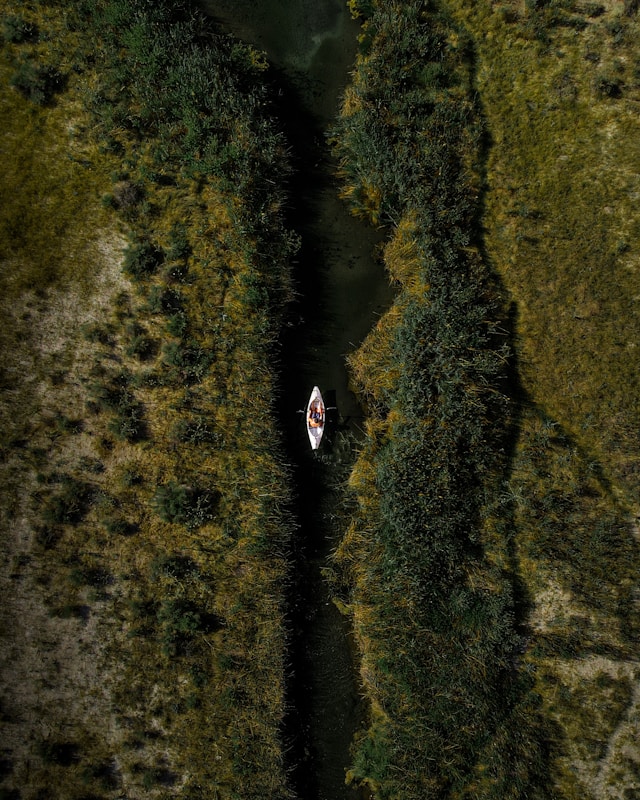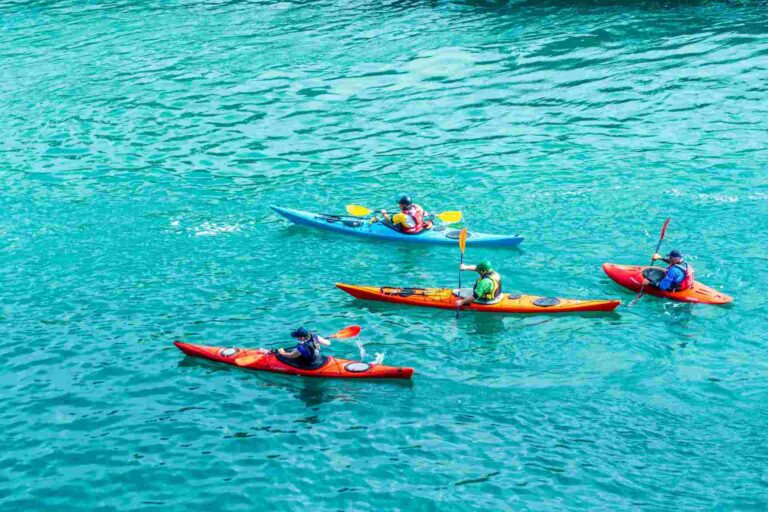Essential Kayaking Safety Tips for All
Are you ready to hit the water in your kayak? Before you do, it’s important to prioritize your safety. Kayaking can be a thrilling and enjoyable experience, but it also comes with certain risks.
In this article, we will provide you with essential kayaking safety tips to ensure a safe and enjoyable experience on the water.
Learning how to stay safe while kayaking is crucial, and it begins with what you wear and bring with you on your kayaking adventures.
Wearing the right attire and packing the necessary gear can make all the difference in keeping you safe and comfortable.
So, let’s dive in and explore what to wear kayaking and what to bring kayaking.
These kayaking safety tips are not just for beginners.
Even experienced kayakers should refresh their knowledge and awareness regularly. With our guidance, you’ll be sure to have a fun and safe kayaking trip. Let’s get started!
Where to Go Kayaking: Exploring the Best Waterways
If you’re looking for an exciting kayaking adventure, there’s no shortage of options. From calm lakes to rushing rivers, the United States offers some of the best waterways for kayaking enthusiasts.
Top Kayaking Locations
| Location | Features |
|---|---|
| Glacier Bay National Park, Alaska | Pristine waters, abundant wildlife, and spectacular views of glaciers and fjords. |
| Boundary Waters Canoe Area Wilderness, Minnesota | Over 1 million acres of protected wilderness with countless lakes and rivers to explore. |
| Colorado River, Arizona and Utah | An iconic river with scenic canyons and world-renowned rapids for a thrilling ride. |
| Everglades National Park, Florida | A unique ecosystem with mangrove forests, wetlands, and diverse wildlife. |
| San Juan Islands, Washington | Calmer waters with stunning views of the Puget Sound and the Olympic Mountains. |
These are just a few of the many amazing kayaking destinations across the United States, each with their own distinct features and challenges. Research your options and choose the location that best suits your interests and skill level.
Factors to Consider
When deciding on a kayaking location, consider the following factors:
- Water conditions: Is the water calm or rough? Are there rapids or waves to navigate?
- Wildlife: Are there any potentially dangerous animals, such as alligators or bears, in the area?
- Accessibility: Can you easily access and launch your kayak?
- Facilities: Are there amenities such as camping areas, restrooms, or picnic areas?
- Season: What is the best time of year to visit? Are there any weather or temperature considerations?
Considering these factors will help you find the best kayaking location for your needs and preferences.
Tips for Planning Your Kayaking Trip
Once you’ve chosen your kayaking location, you’ll need to plan your trip accordingly. Here are a few tips to help:
- Check the weather forecast and be prepared for changes in conditions.
- Research any local regulations or permits required for kayaking in the area.
- Bring appropriate gear and supplies, such as life jackets, paddles, and snacks.
- If you’re new to kayaking, consider taking a lesson or going with an experienced guide.
- Inform someone of your itinerary and expected return time.
With proper planning and preparation, you can have a safe and enjoyable kayaking experience at some of the best waterways in the United States.
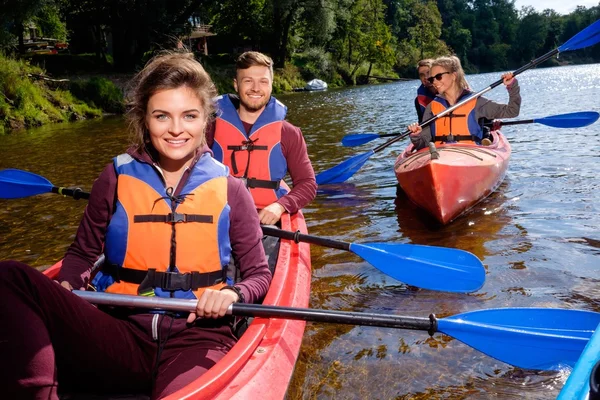
Dressing for Immersion: The Right Attire for Kayaking
When kayaking, it’s important to dress appropriately for immersion to ensure comfort and safety on the water.
Here are some tips on how to dress for a safe and enjoyable kayaking adventure:
| Clothing | Why it’s Important |
|---|---|
| Moisture-wicking base layer | Helps regulate body temperature and keep you dry |
| Insulating mid-layer | Provides warmth in cold water conditions |
| Waterproof outer layer | Protects against wind, waves, and rain |
| Paddle gloves | Protects hands from blisters and weather elements |
| Neoprene paddling shoes | Provides foot protection and insulation |
In addition to clothing, there are accessories that can enhance your kayaking experience:
- Personal Flotation Device (PFD)
- Neoprene spray skirt
- Sun hat with brim and chin strap
- Polarized sunglasses with retention strap
Pro Tip: By dressing appropriately for immersion, you can ensure that you stay comfortable and safe while kayaking. Always wear a Personal Flotation Device (PFD) and bring appropriate clothing and accessories for the weather conditions you will encounter.
Essential Gear: What to Bring on Your Kayaking Trip
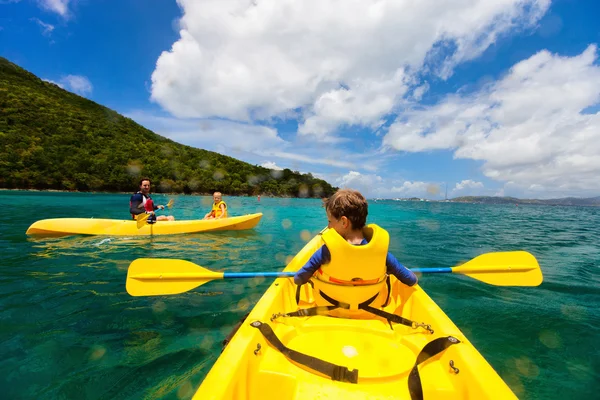
It’s essential to pack the right gear for your kayaking trip to stay safe and comfortable on the water.
Here is a comprehensive checklist of items to consider when preparing for your adventure:
| Essential Gear | Description |
|---|---|
| Personal Flotation Device (PFD) | A properly fitting PFD is essential for safety on the water. Ensure it’s U.S. Coast Guard-approved and always wear it while kayaking. |
| Paddle | A lightweight and appropriately sized paddle is necessary for efficient and comfortable kayaking. |
| Spray Skirt | A spray skirt keeps water out of the cockpit and helps maintain body heat in colder weather. |
| Bilge Pump or Sponge | Essential for removing water that enters the kayak. |
| Whistle | A whistle is required by law on all kayaks and can be used to signal for help in an emergency. |
| Navigation Tools | Map, compass, and GPS are necessary for navigation. Ensure they are waterproof or kept in a waterproof container. |
| Sun Protection | Sunscreen, hat, sunglasses, and protective clothing to protect from harmful UV rays. |
| Water and Snacks | Stay hydrated and energized by bringing plenty of water and snacks. Pack easy-to-carry foods such as energy bars, fruit, and nuts. |
| Dry Bag | Protect personal essentials, such as cell phones, wallets, and cameras, from water damage by packing them in a dry bag. |
| First Aid Kit | Be prepared for minor cuts, scrapes, and injuries by packing a basic first aid kit. |
| Headlamp or Flashlight | If kayaking during dawn, dusk, or night, a headlamp or flashlight is necessary to increase visibility and safety. |
Ensure all gear is packed securely and that weight is distributed evenly in the kayak to maintain stability and balance.
By bringing the necessary gear, you can have a safe and enjoyable kayaking experience!
Local Weather and Hazards: Researching Before You Go
Before heading out on your kayaking adventure, it’s important to research and understand the local weather conditions and potential hazards you may encounter.
This will ensure that you are prepared and can make informed decisions to stay safe on the water.
How to Research Local Weather
The first step in preparing for your kayaking trip is to check the local weather conditions. You can check the weather forecast through a variety of sources, including:
- Your local news station or newspaper
- The National Weather Service website
- Weather apps on your smartphone or tablet
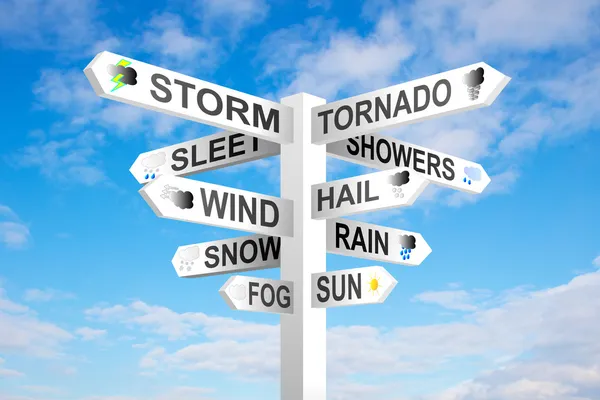
Pro Tip: Pay attention to the wind, rain, and temperature forecast for the day of your trip, as well as any potential storms or weather systems that may impact your kayaking adventure.
How to Identify Potential Hazards
In addition to checking the weather, it’s important to also research potential hazards in the waterways where you plan to kayak.
These hazards may include:
| Hazard | Description |
|---|---|
| Strong Currents | Fast-flowing water that can be difficult to paddle against |
| Underwater Obstacles | Logs, rocks, or other objects that can be dangerous if you collide with them |
| Water Traffic | Other boats or watercraft that may pose a collision risk |
| Weather Conditions | Storms, lightning, or other severe weather that can be dangerous on the water |
You can research potential hazards through a variety of sources, including:
- Marine charts or maps of the waterway
- Websites or apps that provide information on local water hazards
- Local park or wildlife authorities who can provide information on potential hazards
By researching local weather and hazards, you can make informed decisions to ensure a safe and enjoyable kayaking adventure.
Always prioritize safety and be prepared for any potential risks you may face on the water.
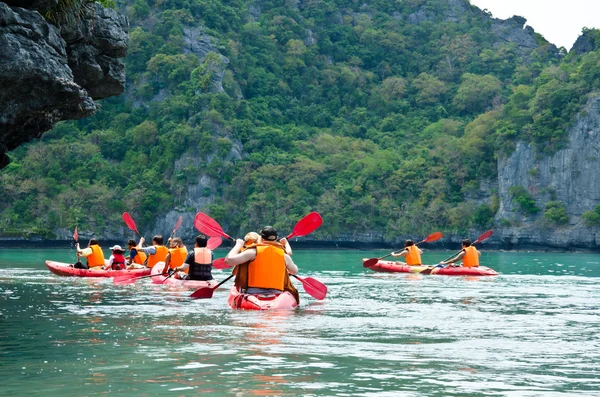
Paddling with a Group: Safety in Numbers
Kayaking with a group can be a great way to enhance your safety and enjoyment on the water.
Here are some tips on how to paddle with a group:
Communication Techniques
Communication is key when kayaking with a group.
Before setting out, make sure you establish a system of signals and calls that everyone understands.
Here are some commonly used communication techniques:
| Technique | Signal |
|---|---|
| Stop | Raise your paddle vertically and hold it steady |
| Go | Wave your paddle in the air |
| Help | Blow a whistle or shout loudly |
It’s also important to maintain constant communication with your group members.
Check in regularly and make sure everyone is still together and feeling comfortable.
Kayaking Safety Tips: Safety Protocols
When kayaking with a group, it’s important to follow safety protocols to ensure everyone’s well-being. Here are some tips to keep in mind:
- Stick together: Stay within sight of each other and avoid straying too far apart.
- Look out for each other: Keep an eye on your group members and be ready to help if anyone needs assistance.
- Practice self-rescue: Make sure everyone in the group knows how to perform a self-rescue in case of an emergency.
- Choose appropriate routes: Select a route that matches the skill level of the least experienced member of your group.
Related Content
- HOW TO SHIP A KAYAK? THE ULTIMATE GUIDE
- HOW TO CLEAN A KAYAK? – THE ULTIMATE GUIDE
- HOW DEEP ARE KAYAK POOLS? – A SIMPLE GUIDE
- WHAT SIZE KAYAK DO I NEED? – A COMPREHENSIVE GUIDE
Enjoying the Experience
Paddling with a group can be a fun and rewarding experience. Here are some tips to maximize your enjoyment:
- Share the experience: Take turns leading the group and sharing your knowledge of the area.
- Take breaks: Schedule regular breaks to stretch your legs, have a snack, and enjoy the scenery.
- Have fun: Relax and enjoy the experience. Kayaking is a great way to connect with nature and with others.
By following these tips, you can enjoy a safe and enjoyable kayaking experience with your group. Communicate effectively, follow safety protocols, and have fun!
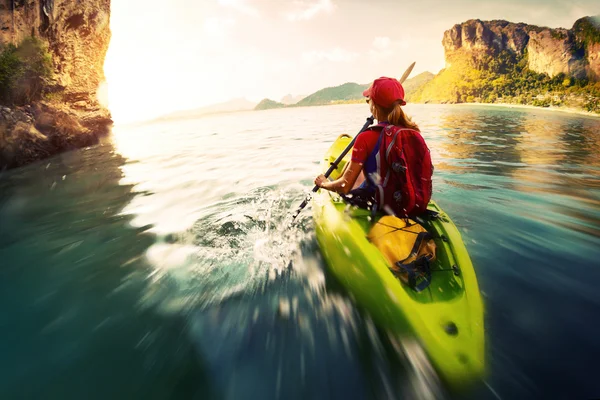
Avoiding Collisions on the Water: Navigation and Awareness
As a kayaker, it’s important to understand how to avoid collisions on the water to ensure your safety and the safety of others.
Here are some tips that will help you navigate the waters safely:
Be Aware of Your Surroundings
The first step to avoiding collisions while kayaking is to be aware of your surroundings. Keep your eyes on the water and stay alert for other boaters, swimmers, and obstacles in your path.
Use Navigation Techniques
There are several navigation techniques that you can use to avoid collisions while kayaking.
Pro Tip: One technique is to always paddle on the right side of the waterway, just like driving on the right side of the road.
You should always obey boating rules and regulations, such as slowing down in no-wake zones and giving right of way to larger vessels.
Stay in Communication
Communication is key to avoiding collisions on the water. If you are kayaking with a group, establish communication protocols before embarking on your trip.
Use hand signals or verbal cues to communicate your intentions to other kayakers and boaters.
Keep a Safe Distance
When paddling near other boaters or swimmers, always keep a safe distance. It’s important to maintain a safe distance when crossing shipping lanes or other high-traffic areas.
By following these tips, you can avoid collisions while kayaking and enjoy your time on the water safely. Safety should always be your top priority.
Creating a Float Plan: Informing Others of Your Itinerary
When kayaking, it’s important to create a float plan to ensure your safety on the water.
A float plan is a document that outlines your trip itinerary, including the expected route, starting and ending points, and estimated time of return.
By sharing your float plan with a responsible person, you can ensure that someone knows where you are going and when you should be back.
How to Create a Float Plan
Here are some steps to follow when creating a float plan:
- Start by gathering information about your trip, including the dates, times, and locations of your planned paddle.
- Identify your starting and ending points, as well as any stops along the way.
- Estimate your travel time based on your paddling speed and any obstacles or challenging areas you may encounter.
- Include a description of your kayak or canoe, along with any identifying features or markings.
- List any safety equipment you will bring, such as life jackets, paddles, navigation tools, and communication devices.
- Provide contact information for yourself and anyone else in your group, including phone numbers and emergency contacts.
- Share your float plan with a trusted person, such as a friend or family member, park ranger, or marina staff.
By creating a detailed float plan and sharing it with someone you trust, you can help ensure a safe and successful kayaking trip.
Update your float plan if your plans change or if you encounter unexpected obstacles or delays.
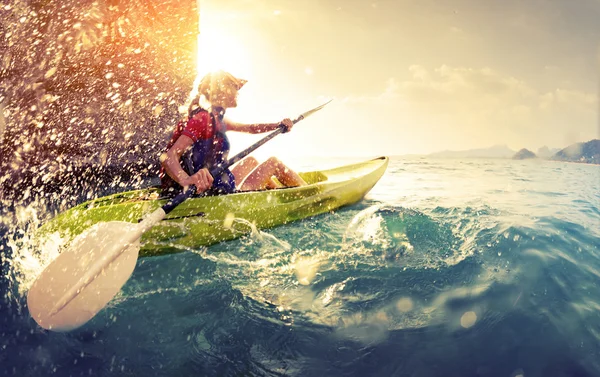
Knowing Your Limits: Assessing Your Kayaking Skills
Assessing your kayaking skills is crucial for a safe and enjoyable experience on the water. It is essential to know your limits and understand your abilities before embarking on a kayaking adventure.
Here are some kayaking safety tips to assess your skills and ensure a safe trip:
Seek Proper Training
To improve your kayaking skills, seek proper training from a qualified instructor.
Opt for a reputable training course that covers kayaking basics, safety protocols, and emergency techniques. A training course provides valuable knowledge and skills necessary for safe kayaking, including navigation, balance, and control.
Evaluate Your Abilities
Before heading out on your kayaking adventure, evaluate your abilities honestly.
Consider factors such as endurance, physical abilities, and experience levels. Start with easy kayaking routes and gradually increase your difficulty levels as you gain experience and confidence.
Consider External Factors
When determining your kayaking skills, consider external factors such as weather conditions, water currents, and potential hazards.
Avoid kayaking in extreme weather conditions or waterways beyond your skill level. Always check weather forecasts and research water conditions before starting your trip.
Stay Within Your Limits
It is essential to stay within your limits when kayaking. Avoid pushing yourself too hard or taking risks beyond your comfort level.
Always prioritize safety and stay alert to potential dangers. Kayaking is a recreational activity and should be an enjoyable experience.
Conclusion
We hope that our essential kayaking safety tips have provided you with the knowledge and confidence to explore the waters with minimal risks.
Safety should always be a priority and that preparation is key to enjoying your kayaking adventures to the fullest.
By wearing the appropriate attire, packing the essential gear and equipment, and paddling with a group, you can enhance your safety on the water.
Research local weather and hazards, avoid collisions, and create a float plan to inform others of your itinerary.
It’s important to assess your kayaking skills and know your limits to minimize risks.
If you’re new to kayaking, seek proper training, and gradually expand your skills. The more confident you become in your abilities, the more you’ll enjoy your kayaking adventures.
Lastly, always respect the water and your surroundings. Keep the waterways clean, follow local rules and regulations, and be mindful of wildlife and other boaters.
With these essential kayaking safety tips in mind, you are all set to create memorable experiences on the water. Happy paddling!
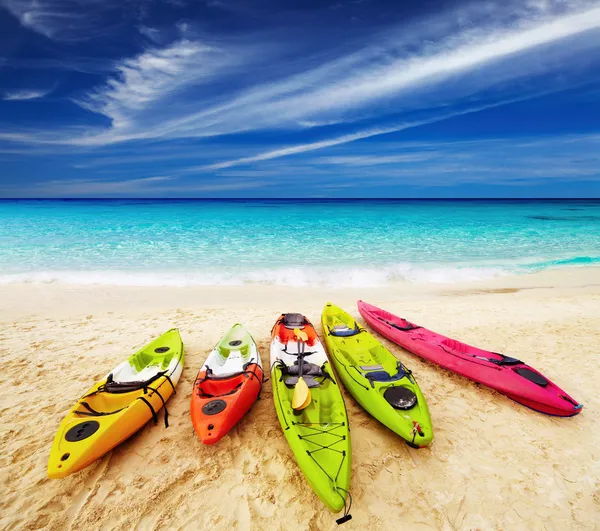
Frequently Asked Question
How can you be safe on a kayak?
1. Always wear a properly fitted personal flotation device (PFD) or life jacket.
2. Learn and practice basic kayaking techniques before attempting more challenging waters.
3. Be aware of weather conditions and water currents before heading out.
4. Inform someone about your kayaking plans and expected return time.
5. Carry essential safety gear, such as a whistle, signaling devices, and a first aid kit.
6. Stay close to the shore, especially if you are a beginner.
What are the precautions for kayaking?
1. Check your equipment before each outing, ensuring it’s in good condition.
2. Be aware of your skill level and choose appropriate water conditions.
3. Dress for the water temperature, not just the air temperature.
4. Learn basic rescue techniques in case of capsizing.
5. Follow any local regulations and guidelines for kayaking.
What are four mistakes in kayaking?
Neglecting Safety Gear: Failing to wear a PFD or not carrying essential safety gear.
Ignoring Weather Conditions: Kayaking in adverse weather or water conditions.
Overestimating Skill Level: Attempting advanced routes without sufficient skills or experience.
Not Informing Others: Failing to let someone know your kayaking plans.
What are some tips on kayaking?
1. Learn and practice basic paddling techniques.
2. Take a kayaking course to improve skills and safety awareness.
3. Choose the right kayak for your skill level and intended use.
4. Stay mindful of your surroundings and potential hazards.
5. Enjoy the experience but be respectful of the environment.
What is the first rule of kayaking?
The first rule of kayaking is to always wear a personal flotation device (PFD) or life jacket. Regardless of your skill level or the conditions of the water, wearing a PFD is essential for your safety. A PFD helps to keep you afloat in case of an accidental capsize or any other unforeseen circumstances. It is important to ensure that the PFD is the appropriate size and properly fastened before entering the water. This rule applies to all kayakers, regardless of their swimming abilities. Safety should always be the top priority when enjoying any water-based activity like kayaking.
Is kayaking safe for beginners?
Kayaking can be a safe activity for beginners if proper precautions are taken. It is important to receive proper training on basic paddling techniques, how to navigate varying water conditions, and safety procedures before venturing out on your own. Beginners should start in calm, controlled environments such as calm lakes or slow-moving rivers and wear appropriate safety gear, including a personal flotation device (PFD). It’s also advisable to kayak with a buddy or in groups and inform others about your planned route and estimated return time. By following these guidelines and gradually building skills and experience, beginners can enjoy the sport of kayaking in a safe and enjoyable way.
When should you not kayak?
There are certain situations when it is not safe to kayak. The following are instances when you should avoid kayaking:
Inclement weather conditions: Avoid kayaking during severe weather conditions such as strong winds, thunderstorms, or heavy rainfall. These weather conditions can create hazardous conditions on the water, including strong currents, high waves, and reduced visibility.
Cold water or extreme temperatures: Kayaking in cold water or extremely low temperatures can pose a risk of hypothermia. If the water temperature is below a safe level, it’s best to refrain from kayaking or ensure you have the appropriate protective gear to handle the conditions.
Poor visibility: If there is limited visibility due to fog, darkness, or other factors, it is not safe to kayak. Reduced visibility increases the risk of collisions with other watercraft or obstacles.
Strong currents or high water levels: Avoid kayaking in areas with strong and fast currents or when water levels are unusually high. These conditions can make it difficult to control and navigate the kayak, increasing the risk of accidents or getting swept away.
Inexperienced or unprepared: If you are new to kayaking and lack proper training, experience, or safety equipment, it is wise to refrain from kayaking until you have acquired the necessary skills and knowledge.
Always prioritize safety while kayaking. It is important to assess the conditions before heading out and make responsible decisions to ensure an enjoyable and risk-free experience.
What are 5 health benefits of kayaking?
Kayaking offers numerous health benefits that contribute to overall wellness. Here are five key advantages:
Cardiovascular Fitness: Regular kayaking sessions can significantly improve cardiovascular health by enhancing heart and lung function. Paddling against water resistance increases endurance and strengthens the cardiovascular system.
Weight Loss and Toning: Kayaking is an excellent low-impact activity that burns calories and facilitates weight loss. Engaging the upper body muscles, as well as the core and legs, helps tone and sculpt the body.
Stress Reduction: Spending time on the water while kayaking provides a peaceful and tranquil experience. Being in a natural environment reduces stress levels, boosts mood, and promotes mental well-being.
Muscle Strength and Endurance: Kayaking involves repetitive movements that target various muscle groups in the upper body, including the arms, back, shoulders, and chest. This activity increases muscle strength, endurance, and overall upper body fitness.
Flexibility and Joint Health: Regular kayaking can enhance flexibility and joint mobility, particularly in the hips, knees, and shoulders. The rotational movements performed while paddling promote flexibility and help maintain joint health.
Please note that it is advisable to consult a healthcare professional or trainer before starting any new exercise regimen, including kayaking, especially if you have any underlying health conditions.
Is kayaking very difficult?
Kayaking can be suitable for both beginners and experienced individuals, and the difficulty level can vary depending on factors such as the type of water, weather conditions, and personal skill level.
For beginners, it is recommended to start in calm and sheltered waters, such as lakes or slow-moving rivers, where the learning curve is gentler. With proper instruction and practice, most people can quickly grasp the basics of kayaking.
However, more challenging conditions, such as whitewater kayaking or sea kayaking in rough waters, can require advanced skills, experience, and specific training. These activities may involve more technical maneuvers and necessitate a higher level of fitness and confidence.
It is crucial to take proper safety precautions, wear appropriate gear (such as a personal flotation device), and receive instruction from qualified professionals when attempting kayaking in more challenging environments. As with any new activity, it’s vital to start slowly, progress at your own pace, and prioritize safety and skill development.

